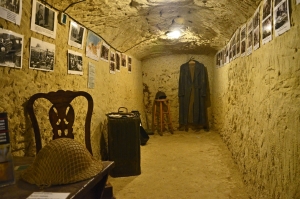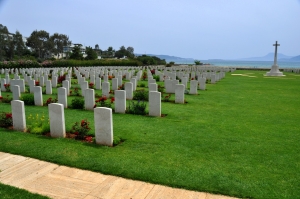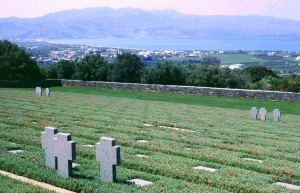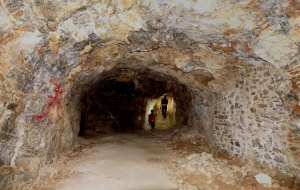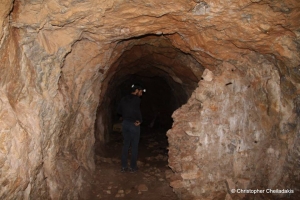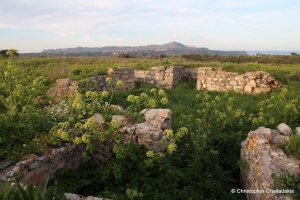A living museum of historical memory that is worth seeing by any visitor of Crete that records the suffering of the Greek people during the German Occupation, is the galleries of Platanias. The shelter was built below the church of Agios Dimitrios at Pano Platanias by the requisitioned locals, for the Germans.
At Vlites position, by Souda port, in a beautifully landscaped scenery, there is the Souda Bay War Cemetery, where ceremonies take place every year in memory of the victims of the Second World War. Throughout the year, many visitors, mainly Australians and New Zealanders, visit this place.
The 4465 Germans, mainly paratroopers, who were killed during the Battle of Crete, were buried in the German Military Cemetery of Maleme (Deutschen Soldatenfriedhof in Maleme). It is the second German military airport in Greece, as there is another one near Athens.
The martyr village Kakopetros at Kissamos province is one of the most beautiful and green villages of the prefecture of Chania. Like all the villages of the area it consists of many distinct neighborhoods (Tsichliana, Seli, Micheliana, Berethiana, Metohi, Sholio, Papadiana, Chatziana, Ganiana, Kotsyfiana and Pontikou Platanos. The neighborhoods of the village are crossed by the rugged canyon Kakopetros.
Like dozens of places in Crete, also the area of Kokkino Horio was chosen by the German Nazis during the Second World War to construct several tunnels. The location they chose for the most important of these tunnels was the hill of Drapanokefala that offers panoramic inspection of the entire bay of Souda.
On the road that connects Maridaki to the monastery of Agios Nikitas, in Asterousia Range, locals have erected a really interesting monument. This is there to remind of an event that took place at that point during the Second World War, showing the bravery of local fighters against a powerful enemy. The location selected for the monument was above a cliff above the monastery of Agios Nikitas, overlooking the deep blue Libyan sea and having the steep slopes of Asterousia with the palm grove of Agios Nikitas in the back.
Malaxa village is the entrance to the region of Keramia by Chaniaa and is built on a very strategic point. It is the only passage to the mainland and it is built atop Mount Verekynthos, having views to the region of Chania and Souda Bay. Therefore, the Germans during the Second World War built many shelters, only the village hosts three.
Ancient Aptera high above the Souda Bay in Chania is naturally fortified place with amazing views. Apart from the ancient monuments and cities that controlled the bay of Souda, the largest natural harbor of Crete and the second across the Mediterranean, there are modern monuments till the German Occupation. Thus, even the German occupiers after the Turks that left the fort Koules on the west side of the plateau occupied by the ancient city there are two German pillboxes, remnants of the second world war.
- 1
- 2











